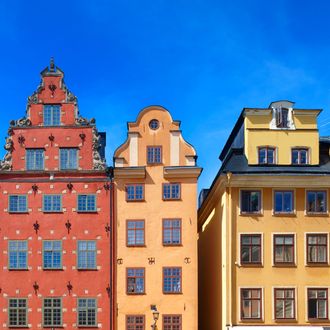
A couple summers ago, I was visiting a Swedish friend of mine living on the north side of Stockholm. The only thing more perplexing than the endless sunlight (it would be “dark” from about 11 p.m. to 3 a.m.) was the fact that he — a government worker in his mid-20s— owned his patioed flat.
“Everybody does,” he explained to me, matter of factly. “It’s impossible to rent.”
And in a follow-up conversation, he added: “It’s not exactly easy buying, either.”
Coming from New York, this was absurd. Why would Stockholm — so often touted as the platonic ideal of urban design (you can literally swim in the rivers downtown! because they’re so clean!) have such a tough time with housing?
A new BBC report sheds some light: The rental queue in Stockholm is so extreme that a member of parliament nominated it for the Guinness Book of World Records. Thanks to the good life the city offers, human migrations, and good-old-fashioned socialism, the self-proclaimed Capital of Scandinavia has a housing crisis that would make a Million Dollar Listing co-host blush.
The raw, crazy numbers: It takes over eight years to find a place in Stockholm. It’s a 20-year wait in the center, and reportedly half a million people — or half the city — are queued up for spots. Meanwhile, the city housing authority says it allocates 10,000 flats a year. If you do land a rental contract, you can lock it in indefinitely. If you can’t, you have to go for the black market.
In optimistically socialist fashion, Sweden has caps on its rents. According to the country’s official statistics arm, rent in Stockholm averages at the equivalent of $781 a month for a 710-square-foot place. In some cases, it’s like living in Tribeca and paying Rockaways rent: “I have many, many friends in Stockholm who are living in some of the nicest parts of town paying around $900 a month, that in London or in California would be double or triple the price,” American expat Tyler Crowley told the BBC. (Which, to an Americans’ ears, might sound familiar: The pretty townhouses of San Francisco and Brooklyn drive up rent like crazy).
In a way, Stockholm is a victim of its own urban success. Consistently ranked as one of the world’s most livable cities, it’s become a tech hub, with veteran firms like Ericsson and new heavyweights like Spotify. But that is hamstrung by housing: According to one business survey, 31 percent of Swedish companies say that the shortage has impeded their recruiting efforts. One property association head explained to the Guardian that since housing is all about who you know and how much money you have, it’s “impossible” for new arrivals to penetrate the housing market.
The thing about Stockholm, though, is that the arrivals keep coming. The European continent is undergoing a historic shift in human migration, as a mixture of conflict and opportunity drive migrants from Africa and the Middle East to chase the European Dream. Stockholm is already the fastest-growing city in Europe. By 2024, the population is slated to swell to 2.5 million. Though powers-that-be have promised to build more than 200,000 homes by then, the market is only going to get more nuts. It’s primed to become even more of an exceptional case: Tech workers are coming to turn Södermalm into SoMa, and you can count on more and more displaced simply seeking a place to live.
Maybe the New York custom of bringing your checkbook to a viewing isn’t so bad after all.




